Skateboard Shapes: Because Not All Boards Are Created Equal
Skateboarding is a sport that has been around for decades and has evolved in many ways over the years. One of the most important aspects of skateboarding is the shape of the skateboard itself. There are many different shapes and sizes of skateboards, each designed for a specific purpose.
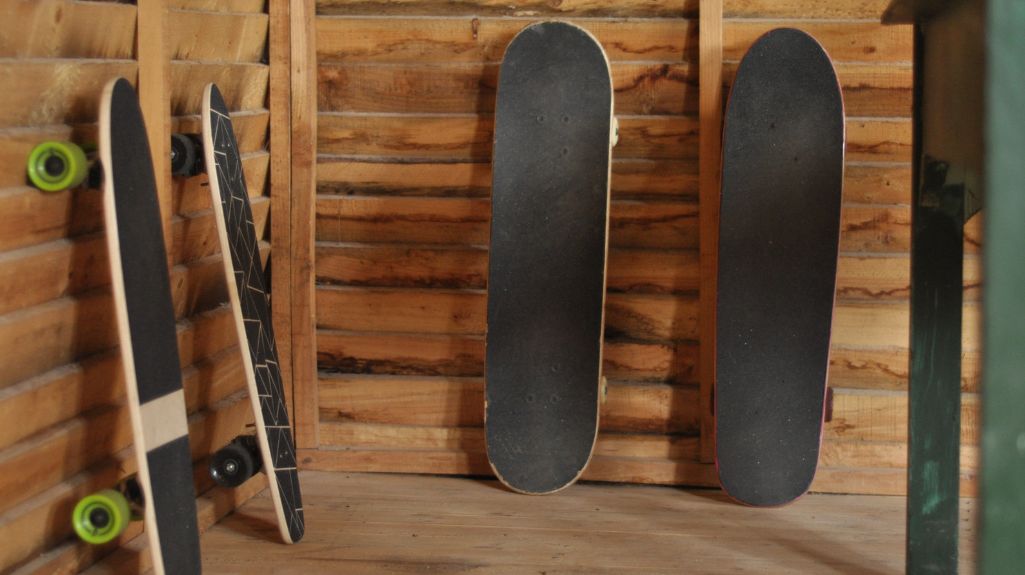
In our exploration of skateboard designs, we'll delve into the unique characteristics of various shapes, from the classic cruisers to the innovative 'new school street decks.'
These modern decks are designed with street skating in mind, featuring specific contours and dimensions that cater to the needs of street-style riders. We will break down the essentials of each design, helping you to make an informed choice about the skateboard shape that best suits your style and skating preferences.
Whether you're a beginner or a seasoned pro, finding the right skateboard deck shape is key to enhancing your performance and enjoyment of skateboarding. Let's dive into the world of skateboard shapes and find your perfect match.
The Basics of Skateboard Shapes
When it comes to skateboarding, the shape of your skateboard is just as important as the tricks you perform. We will cover the basics of skateboard shapes, including their anatomy and relevance to skateboarding.
Understanding Skateboard Anatomy
Before we dive into the different shapes of skateboards, it's important to understand their anatomy. A skateboard consists of several parts, including the deck, trucks, wheels, and bearings. The deck is the flat board that you stand on, and it comes in various shapes and sizes.
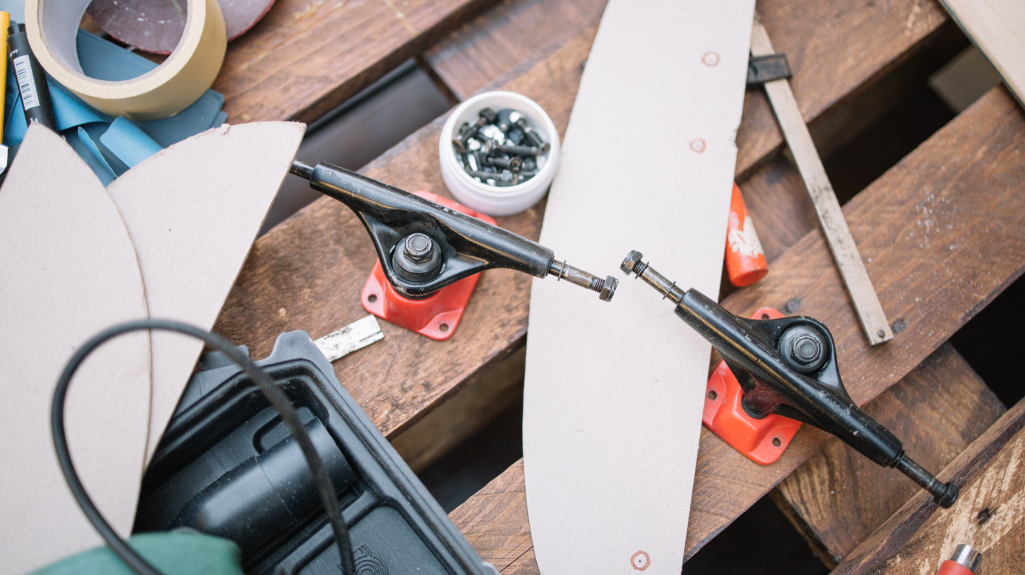
The trucks are the metal components that attach the wheels to the deck and stable board, and they allow you to turn and maneuver your skateboard. The wheels are made of urethane and come in different sizes and hardness levels.
Finally, the bearings are the small metal components that fit inside the wheels and allow them to spin.
Skateboard Size and Shape Relevance
The size and shape of the decks on your skateboard, particularly the correct skateboard deck width, can greatly affect your skating experience. Skateboard decks come in various lengths and widths, and the shape of the deck can also vary.
Mini Skateboards: These compact boards are designed with a shorter length and narrower width, making them highly maneuverable and lighter in weight. They are perfect for younger or smaller riders who may find standard-sized skateboards too cumbersome.
Their size not only makes them more appropriate for the stature of these riders but also allows for easier control, which is crucial when learning the basics of skateboarding.
Symmetrical vs. Uneven Skateboards: Symmetrical skateboards are designed with a uniform shape at both the nose and tail, offering a balanced ride that's particularly beneficial for tricks that involve switching between the front and back of the board.
Uneven, or directional, skateboards have a distinct nose and tail shape, which can be advantageous for certain styles of riding where a rider has a preferred direction, such as downhill racing or complex trick sequences.
Concave and Deck Width: The concave of a skateboard deck is the curve between the two sides of the board. A more pronounced concave can create a secure foothold for tricks and enhanced control during technical maneuvers.
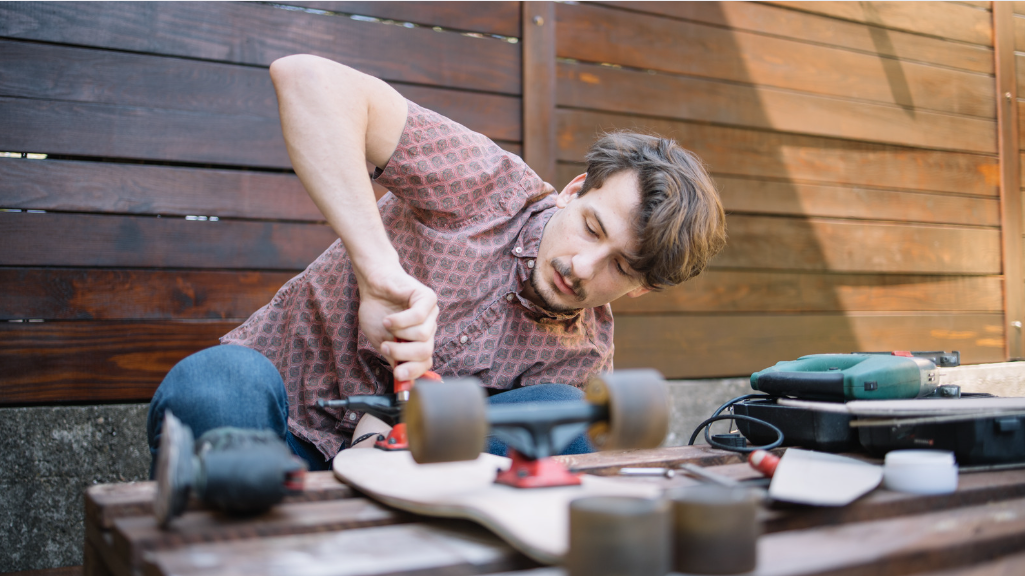
The correct deck width is crucial, as wider boards offer more stability, whereas narrower ones facilitate quicker and more complex tricks. Skaters typically select the concave shape and correct deck width according to their specific skateboarding discipline, whether it's street, vert, or park riding.
Nose and Tail: The nose is the front of the skateboard, typically slightly broader and longer than the tail to assist with aerial maneuvers and catching flips.
The tail is the rear, and it's where a lot of the 'pop' or lift comes from when performing ollies and other tricks. The shape and angle of these elements can affect the board's responsiveness and are often a matter of personal preference among skaters.
Classic (Popsicle) Shape: This is the most prevalent shape in skateboarding, resembling a popsicle stick with a symmetrical and streamlined design. It's versatile and well-suited to a variety of skateboarding styles, from street to ramp, and is the go-to shape for performing a wide range of tricks.
Cruiser Boards: Cruisers are particularly known for their distinctive deck structures, which are designed for smooth, comfortable rides over longer distances. These decks are typically larger for stability and feature softer wheels to absorb the bumps and cracks of street surfaces, making them ideal for transportation and leisurely rides.
They can come in various shapes, including the classic fishtail, which offers a retro aesthetic and functional design.
Skateboard Size Chart: Choosing the right size skateboard is essential for comfort and performance. A skateboard size chart can guide riders to the appropriate board length and width based on individual factors such as height, shoe size, and skating style. This ensures the skateboard complements the rider's build and skill level.
Personal Preference and Skating Style: Ultimately, the choice of skateboard shape and size is deeply personal. Some skaters may prefer a wider board for stability when performing high-flying vert tricks, while others might opt for a narrower board for technical street skating.
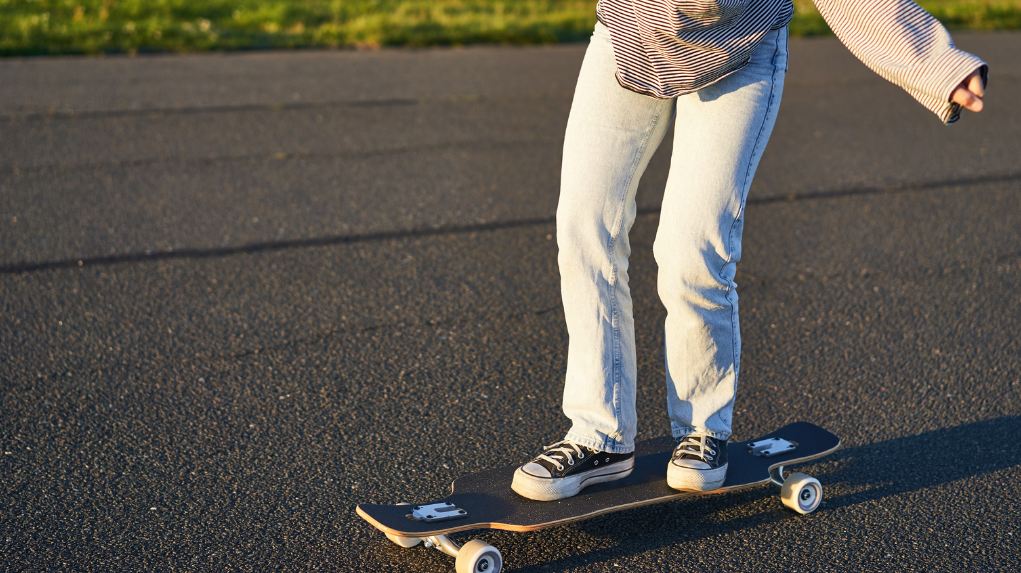
Experimentation with different shapes and sizes is common until a skater finds the perfect match for their unique skating style and preferences.
For more explanation about ALL SKATEBOARD SHAPES check this video by Braille Skateboarding:
Types of Skateboards and Their Shapes
Skateboards come in a variety of shapes and sizes, each designed for a specific purpose. In this section, we'll explore the different types of skateboards and their shapes.
Classic Skateboards
Classic skateboards are the standard boards that most people think of when they hear the word "skateboard street and park skating only." They typically have a deck that is between 7.5 and 8.5 inches wide and are designed for tricks and street skating. Classic skateboards have a short wheelbase, which makes them easy to maneuver and ideal for technical skating.
Longboards
Longboards are longer and wider than classic skateboards, with a deck that is typically between 36 and 42 inches long. They are designed for cruising and transportation and have a longer wheelbase and short decks, which makes them more stable at high speeds.
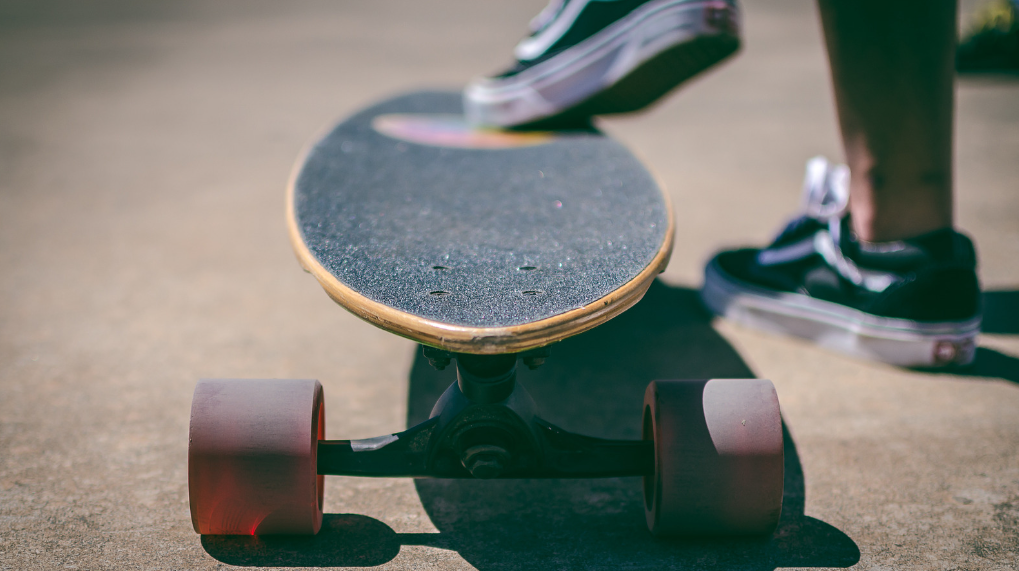
Longboards are also great for carving and can be used for downhill racing.
Cruiser Skateboards
Cruiser skateboards are similar to longboards but are smaller and more compact. They typically have a deck that is between 27 and 33 inches long and are designed for cruising and transportation.
Cruiser skateboards have a wider tail and softer wheels than classic skateboards, which makes them more comfortable to ride over rough terrain.
When choosing a skateboard, it's important to consider the type of skating you'll be doing and the terrain you'll be riding on. Whether you're looking for a board for tricks and street skating or for cruising and transportation, there's a skateboard out there that's perfect for you.
Choosing the Right Skateboard Shape
When it comes to choosing the right skateboard shape, there are a few factors to consider. Two of the most important factors are age and shoe size, as well as virtually the same shape and type of skateboarding style you prefer.
Based on Age and Shoe Size
For younger riders or those with smaller shoe sizes, a shorter skateboard with a narrower width may be more appropriate. This will allow for greater control and maneuverability, making it easier to perform tricks such as the ollie.
On the other hand, older riders or those with larger shoe sizes may prefer a longer and wider board for greater stability and comfort.
To help determine the appropriate skateboard size, refer to a skateboard size chart. These charts take into account both age and shoe size to provide a recommended board length and width.
Based on Skateboarding Style
The type of skateboarding style you prefer is also an important factor to consider when choosing a skateboard shape. For street skateboarding, a shorter and narrower board with harder wheels may be preferred for greater stability and control on rough surfaces.
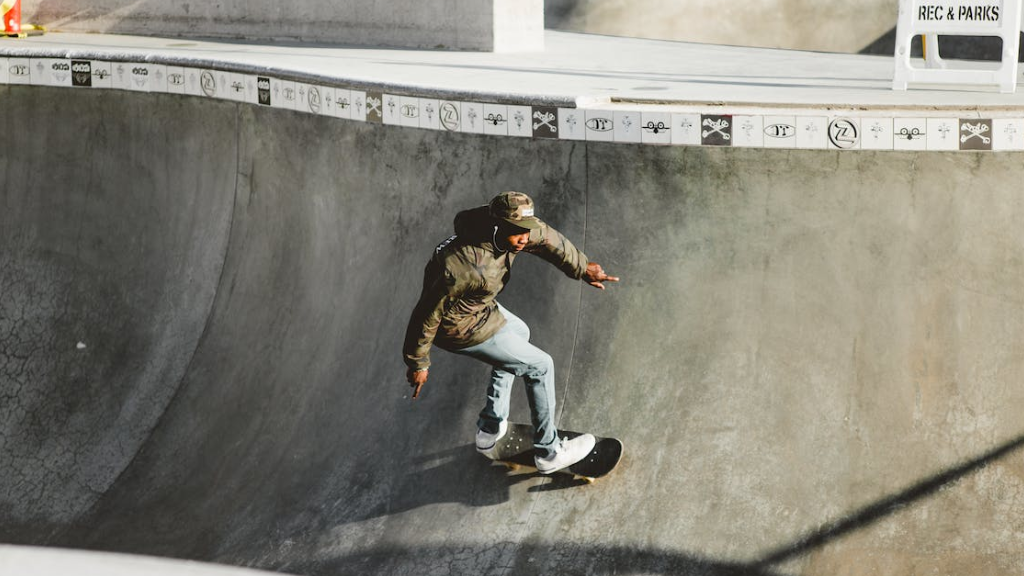
For ramp skating, a longer and wider board with softer wheels may be preferred for greater speed and smoother transitions.
Additionally, personal preferences such as truck tightness and board shape can also play a role in choosing the right skateboard shape. Experiment with different shapes and styles to find the one that best suits your individual needs and preferences.
Frequently Asked Questions
What are some unique skateboard shapes?
Over time, the design of skateboards has diversified, creating an array of shapes to complement different skating techniques and preferences. Among these, the traditional 'school pool decks' stand out with their distinctive wide noses and tails that harken back to the skateboarding boom of pools and ramps.
This classic design sits alongside other popular shapes like the old-school shape, which also features a wider nose and tail, and the fish shape, known for its wider middle that tapers towards the ends.
For those who prefer a balanced ride, the double-kick shape offers symmetrical kicktails on both ends, while the asymmetrical shape provides a different experience on each end, catering to skateboarders who enjoy a unique approach to their tricks and turns.
What is the difference between a popsicle and cruiser skateboard shape?
Popsicle skateboard shapes, often referred to as the 'classic popsicle deck,' are the quintessential choice among street skaters. These symmetrical decks feature a narrow nose and tail, making them excellent for performing tricks.
In contrast, cruiser skateboard shapes are designed with a wider and more rounded profile, prioritizing stability and comfort for cruising and commuting.
Can the shape of a skateboard affect my performance?
Yes, the shape of a skateboard can affect your performance. Specifically, broader street skateboard shapes will provide more stability and control, which can be advantageous in certain styles of skating.
On the other hand, a narrower shape will be more maneuverable and better for doing tricks. Additionally, the shape of the nose and tail will influence performance; a broader nose offers more surface area for foot placement, and a longer tail yields more pop for tricks.
What are the benefits of a wider skateboard shape?
When considering the 'board shape,' it's crucial to note that a wider design offers increased stability and control, which simplifies riding and executing tricks. Additionally, this shape affords more space for foot placement, benefiting individuals with larger feet.
Despite these advantages, the 'board shape' should be chosen with care, as wider boards may sacrifice maneuverability compared to their narrower counterparts, highlighting the importance of matching the board to your unique riding style.
What are some popular skateboard standard deck shape?
Some popular skateboard deck shapes include the popsicle shape, the old-school shape, the fish shape, the double-kick shape, and the asymmetrical shape. Each shape has its own unique characteristics and is designed for different styles of riding.
How do I know which skateboard shape is right for me?
The best way to choose a skateboard shape is to consider your riding style and preferences. If you're into doing tricks, a popsicle shape may be the best choice. If you're more into cruising and commuting, a cruiser shape may be better.
It's also important to consider your foot size and weight, as these factors can affect how the skateboard performs. Ultimately, the best way to find the right skateboard shape is to try out different shapes and see which one feels the most comfortable and natural to you.
